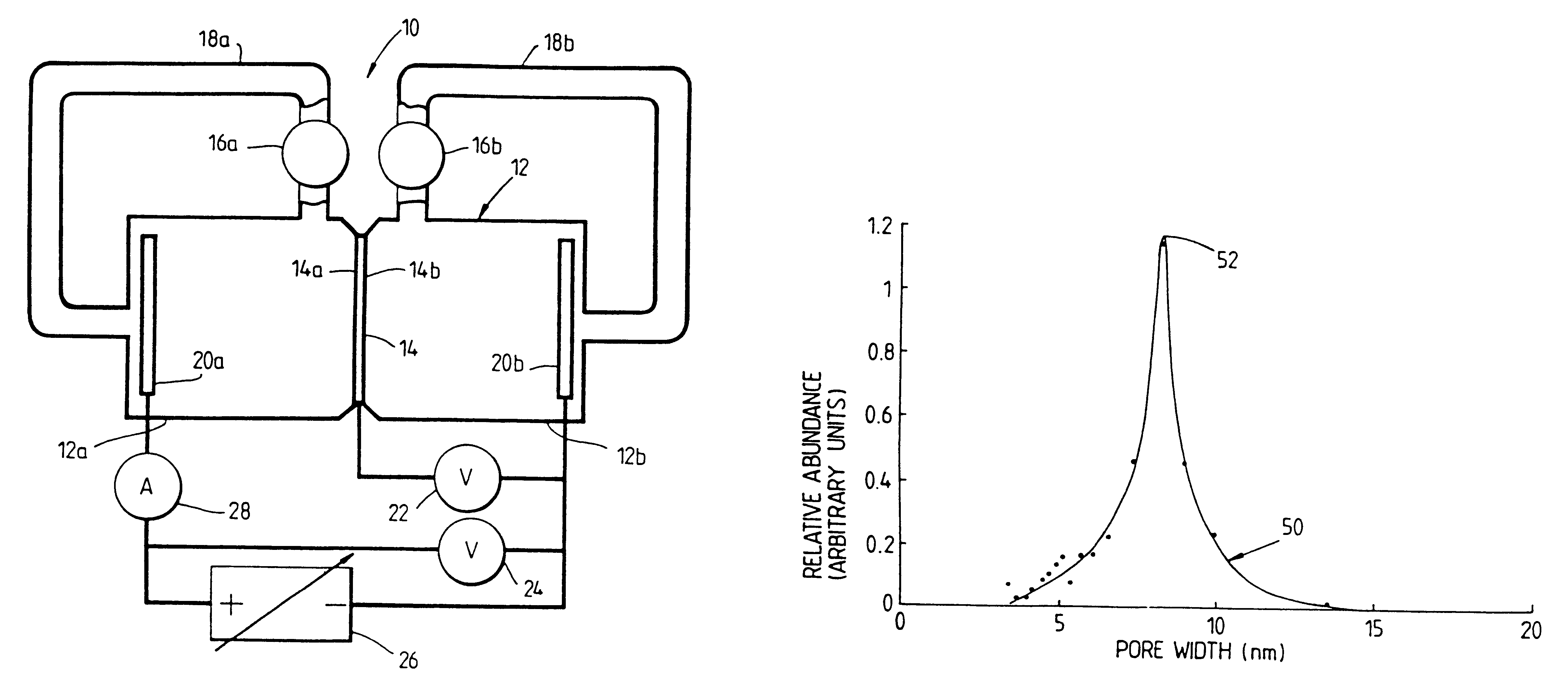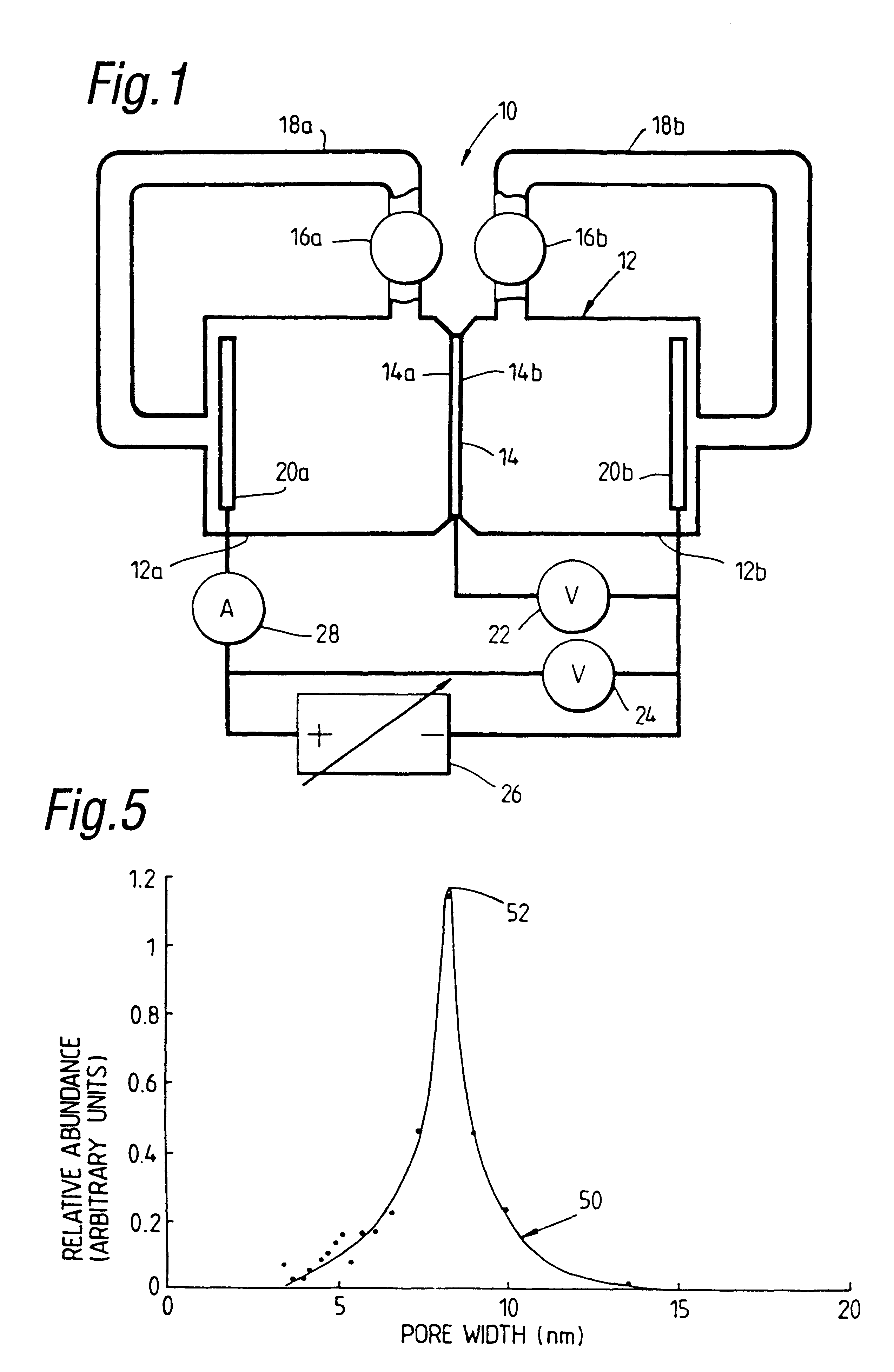Silicon quantum wires
a technology of quantum wires and silicon, applied in the direction of electrical apparatus, nanotechnology, semiconductor devices, etc., can solve the problems of insufficient prior art of furukawa et al, poor luminescence properties of undoped silicon, and the inability to significantly improve the effect of undoped silicon
- Summary
- Abstract
- Description
- Claims
- Application Information
AI Technical Summary
Benefits of technology
Problems solved by technology
Method used
Image
Examples
Embodiment Construction
Referring to FIG. 1, an electrochemical apparatus 10 for processing semiconductor material in accordance with the invention is shown schematically. The apparatus 10 incorporates an electrochemical cell 12 divided into left and right halt cells 12a and 12b by a silicon wafer 14 to be processed. The half cells 12a and 12b are connected to dual purpose pumps 16a and 16b by pipes 18a and 18b respectively. Each combination of elements 12a / 16a / 18a and 12b / 16b / 18b forms a closed loop for electrolyte recirculation. The half cells 12a and 12b incorporate respective platinum electrodes 20a (anode) and 20b (cathode). A first voltmeter 22 is connected between the Si wafer 14 and the cathode 20b, and a second voltmeter 24 is connected between the anode 20a and the cathode 20b. A galvanostat 26, ie a constant current source, is connected in series with an ammeter 28, and this series arrangement is connected between the anode 20a and the cathode 20b.
The apparatus 10 is hinged (not shown) in the re...
PUM
 Login to View More
Login to View More Abstract
Description
Claims
Application Information
 Login to View More
Login to View More - R&D
- Intellectual Property
- Life Sciences
- Materials
- Tech Scout
- Unparalleled Data Quality
- Higher Quality Content
- 60% Fewer Hallucinations
Browse by: Latest US Patents, China's latest patents, Technical Efficacy Thesaurus, Application Domain, Technology Topic, Popular Technical Reports.
© 2025 PatSnap. All rights reserved.Legal|Privacy policy|Modern Slavery Act Transparency Statement|Sitemap|About US| Contact US: help@patsnap.com



